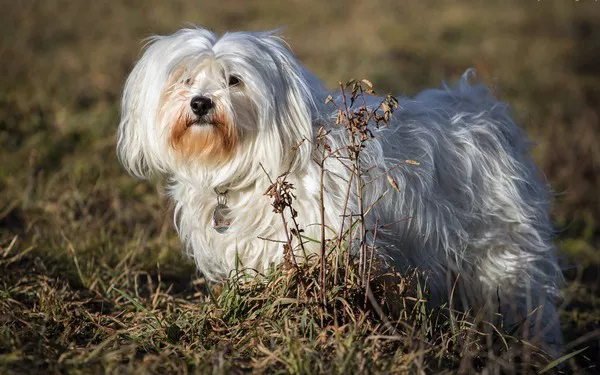American Curl cats are one of the most distinctive cat breeds, instantly recognizable by their uniquely curled ears. Beyond their charming physical traits, they are known for their lively, affectionate personalities. If you are the proud owner of an American Curl, you may have noticed how energetic and playful they can be. However, a common question among owners is: “When do American Curl cats calm down?”
Understanding the developmental stages of an American Curl’s behavior and energy levels can help you provide the best care for your feline friend. In this article, we’ll explore the natural growth and behavior patterns of this breed, from kittenhood to senior years, and help you learn when you can expect your American Curl to settle down.
The Early Years: Kittenhood (0-6 Months)
Playful Beginnings
During the first few months of life, all kittens, including American Curls, are at their most energetic. This is a crucial time for development, both physically and mentally. From the moment they open their eyes at around 7-10 days old, they begin to explore the world around them. Their sharp claws and playful nature become evident as they start to interact with their littermates, practicing hunting and pouncing skills through play.
For American Curl kittens, this stage is even more pronounced due to their naturally curious and active nature. Their brains are developing rapidly, and they are learning how to interact with their environment. As a result, they are in constant motion, darting around and playing with any object they can find, from toys to household items.
High Energy and Learning
Between the ages of 3 and 6 months, American Curl kittens experience a surge in energy. This period of high activity is essential for muscle development, motor skills, and coordination. Playtime is also vital for socialization, teaching them boundaries, and how to interact with both humans and other animals.
Although this is a joyous time for most cat owners, it can also be tiring. Owners often find themselves asking, “When will my American Curl calm down?” At this age, it’s essential to remember that the playful behavior is perfectly natural and beneficial to the kitten’s growth.
Encouraging Positive Behavior
To manage this high-energy period, providing plenty of interactive toys, cat trees, and designated playtime is crucial. This helps the kitten expend energy in healthy ways, reducing the likelihood of behavioral problems such as scratching furniture or biting. Early training is essential as well, as it can set the foundation for future good behavior.
The Adolescent Phase: 6 Months to 2 Years
The Adolescent Surge
As your American Curl kitten approaches the six-month mark, you may begin to notice slight changes in behavior. While they are still highly energetic, their activity may become more purposeful. However, this is often referred to as the “adolescent phase,” and just like human teenagers, American Curls at this age may experience mood swings and bursts of unpredictable behavior.
American Curls between the ages of 6 months and 2 years are often in peak physical condition, with boundless energy. Owners frequently report their cats racing through the house at odd hours, a behavior known as “zoomies,” which is common among young, active cats. These bursts of energy are entirely normal and serve as a way for the cat to burn off excess energy.
Hormonal Changes and Spaying/Neutering
Around this age, many American Curl cats undergo spaying or neutering, typically between 6 and 9 months of age. This procedure can significantly influence their behavior. Intact cats may exhibit more territorial behavior, including marking, howling, or becoming more aggressive toward other animals. Neutering or spaying usually helps reduce these tendencies, making the cat calmer and less prone to such behaviors.
However, it’s important to note that the effects of these procedures may take time to manifest. While spaying or neutering can lead to a reduction in hormonal-driven behaviors, your American Curl will still have plenty of youthful energy that needs an outlet.
Maintaining a Balanced Environment
As your American Curl cat transitions through adolescence, it’s crucial to maintain a structured environment. Continued socialization, play, and positive reinforcement for good behavior are necessary to guide them through this sometimes-challenging phase. At this stage, American Curls can benefit from puzzle toys or other mentally stimulating activities that challenge their intelligence and curiosity. Keeping them mentally engaged is just as important as physical exercise.
Adulthood: 2 to 5 Years
The Gradual Calm Begins
By the time your American Curl reaches the age of 2, you may start to notice a gradual change in their behavior. While they are still playful and curious, they begin to display more self-control and may start showing signs of maturity. This period is the beginning of their adult phase, where the chaotic energy of kittenhood starts to subside.
During these years, many American Curls begin to exhibit a more relaxed demeanor. While they still enjoy playtime, they may no longer be as hyperactive as they once were. You may find that they are more content to sit by the window, watch birds, or nap in a sunny spot for longer periods. However, their playful nature will always remain part of their personality, especially in short bursts of energy throughout the day.
Maintaining Activity in a More Balanced Way
Even though American Curls are becoming calmer, they still need regular play and stimulation to stay happy and healthy. Cats that don’t receive enough physical and mental stimulation may become bored, which can lead to destructive behaviors such as scratching or excessive meowing.
Interactive play is still important at this stage, although it may not be as frequent or intense as during kittenhood. Engage your adult American Curl with feather wands, laser pointers, or automated toys that allow them to channel their hunting instincts in a positive way. Mental stimulation can be provided through puzzle feeders or even teaching your cat new tricks, as American Curls are known to be intelligent and trainable.
Personality Development
During these adult years, American Curls often develop strong bonds with their human families. They are social creatures that enjoy being involved in daily activities, often following their owners around the house or curling up next to them while watching TV or reading a book. Their affectionate nature becomes more evident, and while they may still be playful, they are also likely to become more cuddly and mellow.
Mature Years: 5 to 10 Years
A Settled and Balanced Cat
At around 5 years of age, American Curls typically begin to reach their full behavioral maturity. By this time, their activity levels have decreased, and their personality has become more defined. Most owners will notice that their cats have fully calmed down, displaying a perfect balance between playfulness and relaxation.
During these years, your American Curl is likely to be more interested in lounging around the house, finding comfortable spots to nap, and observing the world around them. They will still have moments of playfulness, but these bursts of energy are usually shorter and less frequent. Their curiosity remains, but they tend to explore their surroundings with more caution and calmness than they did as kittens.
Health and Behavioral Considerations
As American Curls enter their mature years, it is important to be mindful of their health. Cats in this age group may begin to show early signs of aging, such as changes in activity levels, joint stiffness, or weight gain. Regular veterinary check-ups are crucial to ensure they remain in good health. Diet adjustments may also be necessary to prevent obesity, which can be more common in less active cats.
See Also: What is the Rarest American Curl?
Providing low-impact play activities, like slow-moving toys or gentle games of fetch, can help keep your cat physically and mentally engaged without putting strain on their body. It’s also important to provide plenty of cozy spots for resting, as mature cats often enjoy longer naps.
Emotional Bonding and Companionship
During this stage, the bond between an American Curl and their owner is usually at its strongest. They are likely to seek more attention, enjoy being petted, and may even become more vocal, communicating with their owners through soft chirps and purrs. Many cats in this age group become more affectionate and may spend more time sitting on their owner’s lap or snuggling in bed.
Senior Years: 10 Years and Older
Slower Pace and Increased Calmness
Once American Curls reach the age of 10 or older, they are considered senior cats. At this stage, their energy levels have significantly reduced, and they spend the majority of their time resting. While they may still enjoy a brief game of chasing a toy or batting at a string, they tend to tire more easily and prefer relaxation over play.
Senior cats are known for their calm demeanor, and American Curls are no exception. They may become less interested in exploring or interacting with new things and more focused on maintaining a consistent routine. These older cats often thrive in a predictable environment, where they can feel secure and comfortable.
Special Care for Senior Cats
With advancing age comes the need for more specific care. Senior American Curls may develop health issues such as arthritis, dental problems, or kidney disease. Regular veterinary care is essential to monitor their health and address any age-related concerns early on. Adjusting their diet to meet the needs of older cats, such as providing food designed for senior cats with joint support and fewer calories, can help them stay healthy.
Even though they are calmer in their senior years, providing gentle play and regular interaction is important for their well-being. Cats are known to live longer, happier lives when they are kept engaged and receive attention from their owners.
Continuing to Strengthen the Bond
Senior American Curls are often the most affectionate, forming deep bonds with their human companions. As they slow down physically, they may seek more emotional connection, often curling up on their owner’s lap or staying close by. Ensuring they feel loved and cared for can greatly enhance their quality of life during their twilight years.
Conclusion
Understanding the developmental stages of your American Curl can help you appreciate the natural progression of their behavior and energy levels. From the exuberant playfulness of kittenhood to the relaxed demeanor of their senior years, each stage of their life offers unique challenges and joys.
By providing the right care, stimulation, and affection at each stage, you can help ensure that your American Curl remains happy and healthy throughout their life. Whether they are bounding around as a kitten or enjoying a quiet nap as a senior, American Curls are known for their loving nature and distinctive personalities. Embracing each stage of their life with patience and understanding will strengthen the bond you share and ensure that both you and your feline friend enjoy a fulfilling and happy journey together.
Related Topics:


























